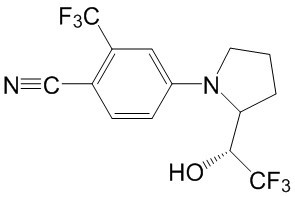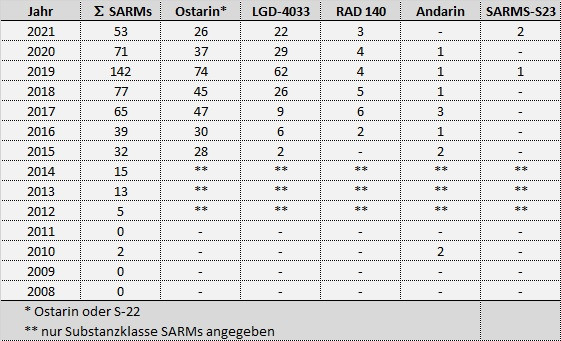LGD-4033 - Selective Androgen Receptor Modulator (SARM)

LGD-4033 (Ligandrol, VK5211)

New Publication: Micro-dosed LGD-4033
Wagener F, Guddat S, Görgens C, Angelis YS, Petrou M, Lagojda A, Kühne D, Thevis M. Investigations into the elimination profiles and metabolite ratios of micro-dosed selective androgen receptor modulator LGD-4033 for doping control purposes. Anal Bioanal Chem. 2022 Jan;414(2):1151-1162. doi: 10.1007/s00216-021-03740-7. Epub 2021 Nov 4. PMID: 34734312; PMCID: PMC8724150.
download article
Abstract
LGD-4033 (ligandrol) is a selective androgen receptor modulator (SARM), which is prohibited in sports by the World AntiDoping Agency (WADA) and led to 62 adverse analytical fndings (AAFs) in 2019. But not only deliberate doping with LGD4033 constitutes a problem. In the past years, some AAFs that concerned SARMs can be attributed to contaminated dietary supplements (DS). Thus, the urgency to develop methods to diferentiate between inadvertent doping and abuse of SARMs to beneft from the performance-enhancing efect of the compound in sports is growing. To gain a better understanding of the metabolism and excretion patterns of LGD-4033, human micro-dose excretion studies at 1, 10, and 50 µg LGD-4033 were conducted. Collected urine samples were prepared for analysis using enzymatic hydrolysis followed by solid-phase extraction and analyzed via LC-HRMS/MS. Including isomers, a total of 15 phase I metabolites were detected in the urine samples. The LC-HRMS/MS method was validated for qualitative detection of LGD-4033, allowing for a limit of detection (LOD) of 8 pg/mL. The metabolite M1, representing the epimer of LGD-4033, was synthesized and the structure elucidated by NMR spectroscopy. As the M1/LGD-4033 ratio changes over time, the ratio and the approximate LGD-4033 concentration can contribute to estimating the time point of drug intake and dose of LGD-4033 in doping control urine samples, which is particularly relevant in anti-doping result management.
Illegal Distribution via Internet
In the following publication in 2015, the identification of a SARM-based substance distributed via Internet-based suppliers as LGD4033 is reported:
Mario Thevis, Andreas Lagojda, Dirk Kuehne, Andreas Thomas, Josef Dib, Annelie Hansson, Mikael Hedeland, Ulf Bondesson, Tina Wigger, Uwe Karst and Wilhelm Schänzer: Characterization of a non-approved selective androgen receptor modulator drug candidate sold via the Internet and identification of in vitro generated phase-I metabolites for human sports drug testing. Rapid Commun. Mass Spectrom. 2015, 29, 991–999.
Abstract
Similar articles followed, for example in 2017:
Van Wagoner RM, Eichner A, Bhasin S, Deuster PA, Eichner D. Chemical Composition and Labeling of Substances Marketed as Selective Androgen Receptor Modulators and Sold via the Internet. JAMA. 2017 Nov 28;318(20):2004-2010.
Abstract and free article
Physiology
"Background. Concerns about potential adverse effects of testosterone on prostate have motivated the development of selective androgen receptor modulators that display tissue-selective activation of androgenic signaling. LGD-4033, a novel nonsteroidal, oral selective androgen receptor modulator, binds androgen receptor with high affi nity and selectivity."
Basaria S, Collins L, Dillon EL, et al. The safety, pharmacokinetics, and effects of LGD-4033, a novel nonsteroidal oral, selective androgen receptor modulator, in healthy young men. J Gerontol A Biol Sci Med Sci. 2013;68(1):87-95.
Abstract and free article
Doping
The first two positive doping control samples proofing the abuse of LGD-4033 were reported by the World Anti-Doping Agency (WADA) in 2015.
see also WADA statistics for SARMs SARMs
